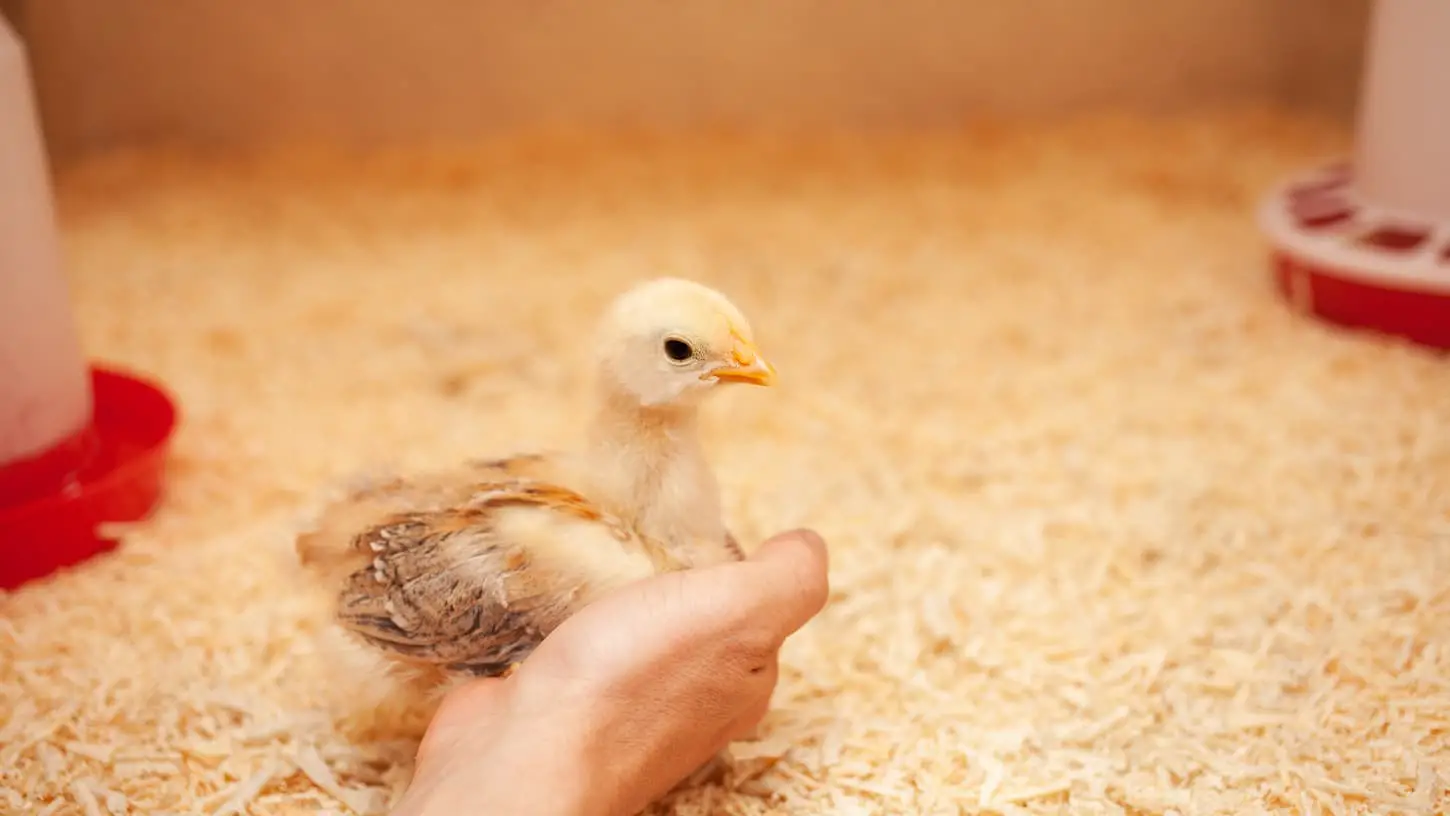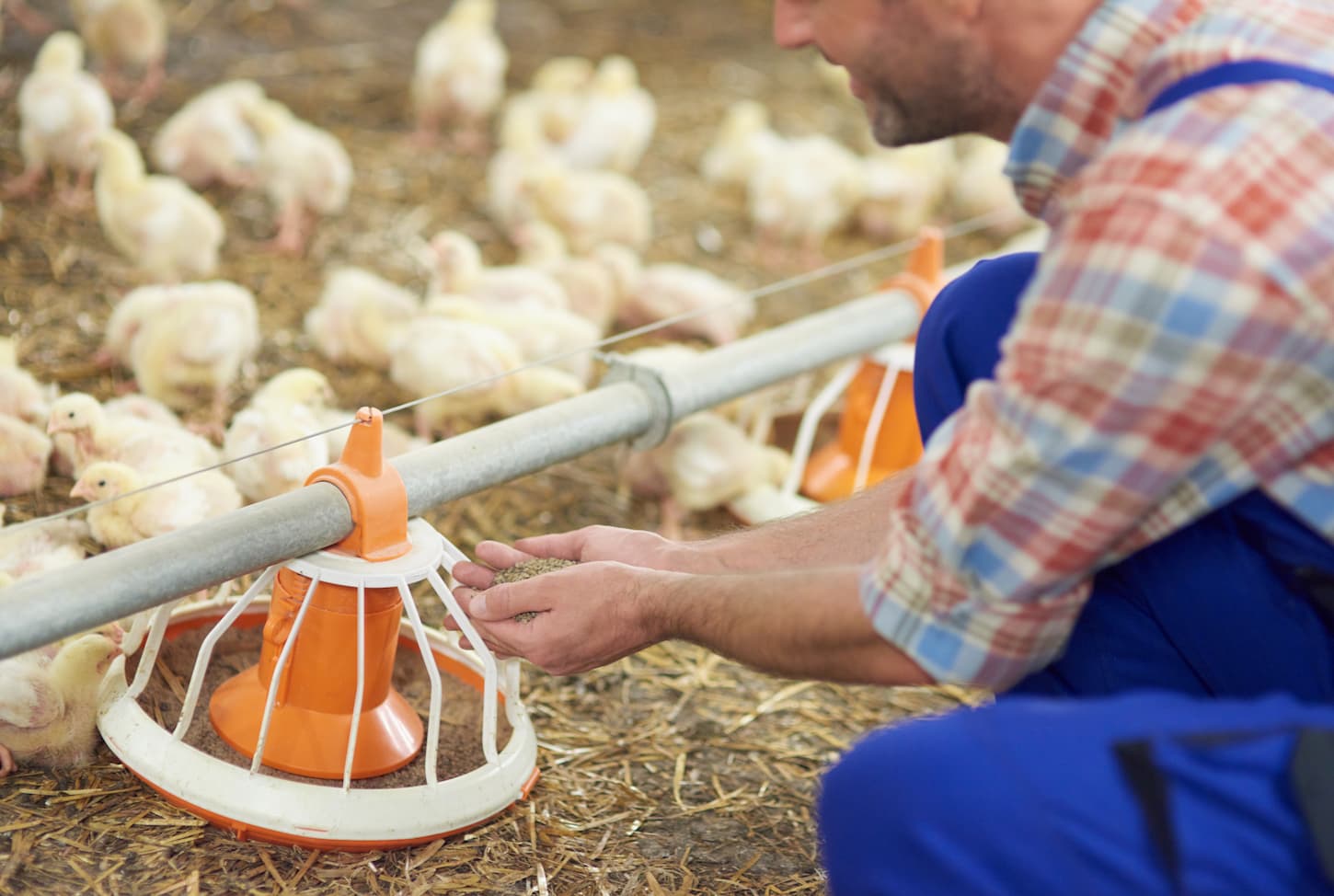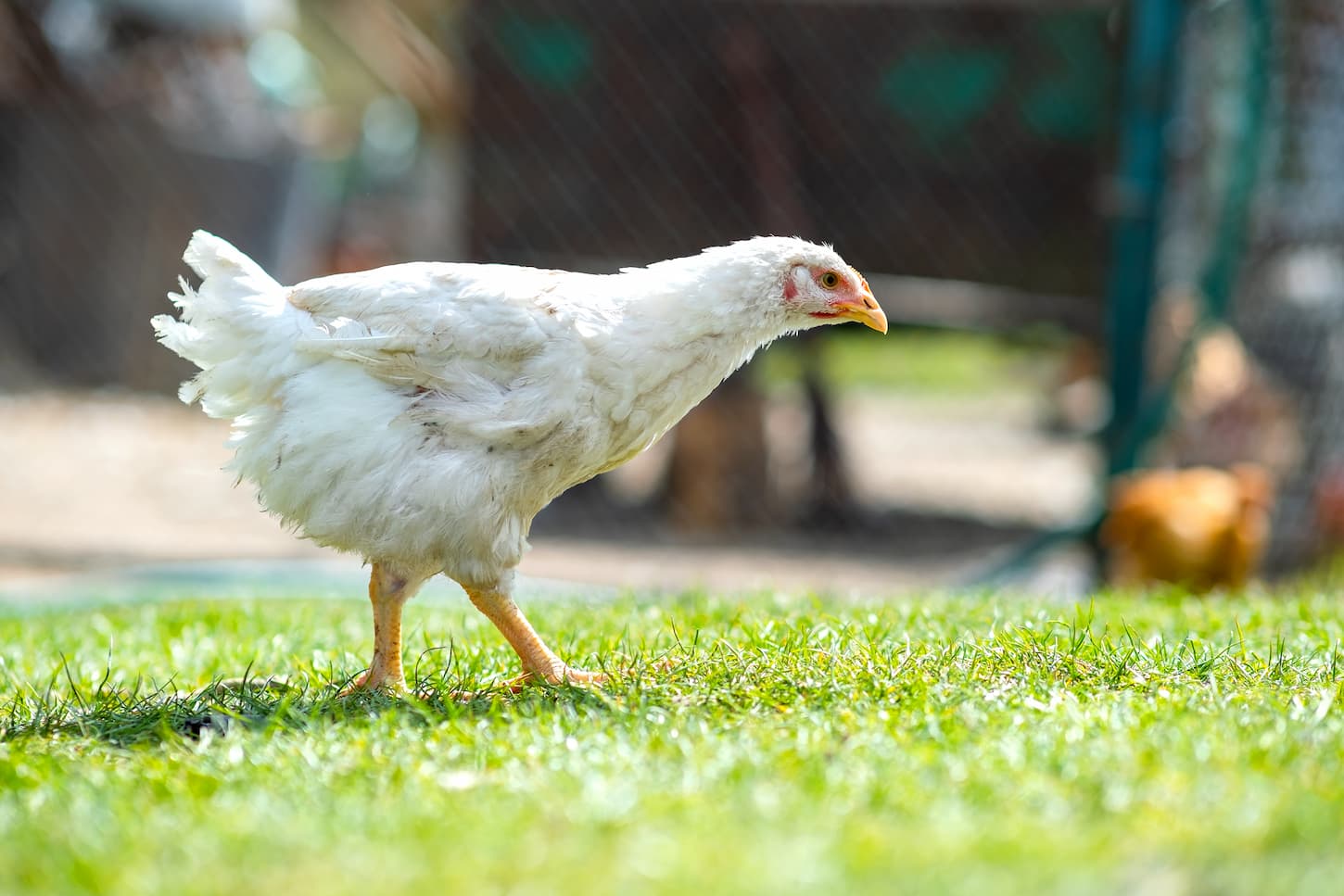Welcome to the world of a chicken sexer! We’ll break down everything there is to know about chicken sexing. Most people have a tough time believing that chicken sexing is a real job or pays well. We need to answer quite a few questions, so let’s get started.
A chicken sexer is a person who determines a chicken’s gender, whether it is a female (a hen) or a male (a rooster). Chicken sexers can be trained professionally, learn this skill independently, or mix the two. Experienced chicken sexers can reliably determine a chicken’s gender.
First, let’s address the elephant in the room: chicken sexer is a hilarious term, but the truth is that chicken sexing is a vital skill not very many people know. Do you want to know more about what chicken sexers do? Let’s find out.

What Do Chicken Sexers Do?
Chicken sexers accurately and quickly can tell if a chick is a female or a male. This is particularly useful and vital because female and male chicks have different purposes. It is important to know if a chick is a hen or rooster before they’re fully grown.
Most of us aren’t aware that chickens don’t have visible genitalia. Now that we know this, a new and exciting world about chicken sexers has opened. Let’s briefly go through the fascinating story of chicken sexers.
Did you know that the best chicken sexers come from Japan? Poultry owners usually wait for five weeks to determine chicken gender. In the past, a chicken sexer was a mystery man, like a shaman. Chicken sexers just knew the gender of a chicken by looking at it.
Of course, the truth is much simpler and, unfortunately, not that mysterious. At the beginning of the 20th century, the Japanese discovered a new method to teach people how to determine the gender of a chicken.
Thanks to Zen – Nippon Chick Sexing School and their two-year chicken sexing course, the future of the poultry industry changed forever. The Japanese brought their knowledge to the west, specifically England, and altered poultry production.
How did the Japanese distinguish female chicks from males? Let’s keep that mystery alive for just a few more moments. But we will get into it.
Is a chicken sexer a real job?
Chicken sexer is a real job and can be challenging. Becoming a professional chicken sexer takes a couple of years of training. It is important to learn and notice tiny differences in the shape and size of a chick’s genitalia.
Even more fascinating is that chicken sexers can categorize between 800 and 1,200 chicks per hour with an astonishing accuracy of 99 percent. Depending on the order, a professional can do this for up to 13 hours daily.
So, the answer is yes, chicken sexer is a real job.

How Do Chicken Sexers Determine Chicken Gender?
Chicken sexers can use one of several methods to determine a chick’s gender. Vent-sexing can be done on any one-day-old chick, while feather-sexing can be done with some specific chicken breeds.
Here is the method chicken sexers use on a one-day-old chick. First, they take the chick and turn it upside down. Then, the chicken sexer manually everts the chick’s vent area and looks for the absence or presence of the male sex organ.
It’s time to reveal the mystery of how chicken sexers determine gender. There are two main methods chicken sexers use: vent and feather sexing.
The eternal question we ask ourselves: is it a rooster or a hen? Here is how to find out.
Vent sexing is the most accurate and complex method to determine the chicken’s gender. So how does this method work?
Only someone with great skill can do this method, so we advise you not to do this method by yourself; this isn’t a job for an amateur. If the vent sexing method is performed incorrectly, the chick is in danger of disembowelment and even death.
This method is reserved for professional chicken sexers only.
Feather sexing is a straightforward method that even an amateur can efficiently perform. It’s important to use the feather sexing method when the chick is one day old. Otherwise, it might be too late. Why do you ask?
Well, female chicks develop their wing feathers before hatching. On the other hand, male chicks develop their wing feathers after hatching. So, when we do the math, in one-day-old female chicks, the wing feathers will be more evident than in the male ones.
Also, what is interesting is the wing feathers look different in male and female chicks. This is because male chick wing feathers are all the same size, while female chick wing feathers are different in size; a short feather always follows one long feather, and so on.
When determining chicken gender with the feather sexing method, chicken sexers are extremely careful and gentle while spreading the wing. If not, they can permanently damage the chick’s wing.
Other chicken sexing methods
Amateurs use other methods, such as comparing comb colors and sizes, behavior, down feather colors, and vocalization.
If you want the full guide to knowing more about how to sex chickens yourself, make sure you read our Complete Guide to Chicken Genders and Sexing Chicks. Otherwise, we’ll give you the short version here.
Combining colors and sizes is non-invasive but not as accurate as the vent or feather method. This method doesn’t take too much time to learn.
When the chicks are a couple of weeks old, the comb on their head is much more visible. A fuller and taller comb likely mean it’s a male chick.
Also, the color of the comb can give some answers to the chicken’s gender. A male’s comb is usually brighter than a female’s. It isn’t important if the comb is red or pink; the brighter comb belongs to males.
Behavior is also a non-invasive method that determines a chicken’s gender. But prepare to keep an eye on each chick’s behavior. Behaviors like fighting and showing dominance are very likely in male chicks.
Of course, this isn’t a 100% accurate method. We can occasionally run across a dominant female chicken, but it’s rare.
Down feather colors are a method where we can determine the chicken’s gender only if the chick’s parents aren’t the same breed. So, if we combine two different breeds, the down feather color is a great mark of the chicken’s gender.
Vocalization is the easiest chicken gender method of all. If we have four months to spare, that is usually the time when the male chicks start to crow. By then, they will most likely look like roosters. Hens do not crow; they cackle.
Chicken sexing and old wives’ tales
Many old wives’ tales tell us how to determine chicken gender. These interesting legends are passed down from generation to generation. Like every old wives’ tale, the ones on chicken sexing are also based on folklore and a little bit exaggerated, but they are fun!
Here are a couple of methods on how not to determine chicken gender. Keep in mind that these are not scientific, but they are fun.
Egg shape
For years there has been a belief you can determine chicken gender even before the chick hatches by observing the egg shape. If the egg is round, then it is a female. If the egg is narrow in shape, then it is a male.
This is far from the truth. First, the egg shape has nothing to do with the chicken’s gender. Perhaps the egg isn’t even fertile.
We get eggs of all sizes, and we don’t have any roosters. So unless our flock visits the neighbors’ house two blocks down, the eggs aren’t fertilized. And our yard is fully fenced, so there’s no way our flock is going on an unsupervised field trip.
The upside-down chick
Legend says if we turn the chick upside down, the female chick will stay that way while the male chick will start fidgeting. Again, this is a fun legend, and that is it.
Turning our chicks upside down could hurt them, depending on their development stage.
The floating egg
The folk tale says if we put the egg in the water and it floats, it’s a female chick. If it doesn’t float, then it is a male chick.
The truth is entirely different. This test is used to discover if the egg is fresh or not. If the egg floats, then it is an old egg, and you should throw it away. If it sinks, then the egg is fresh and safe to eat.
Egg candling
In a dark room, light a candle and hold the egg underneath the candlelight. If the chick’s air sac is placed at the rounded end of the egg, then the folk tale says it is a male chick.
In real life, candling an egg isn’t used to determine gender; it is used to examine the chick’s growth.
The string method
Tie a weight to a string and slowly swing it over the egg. If the weight starts to swing in a circular motion, it’s a female chick. If it swings in linear motion, then it’s a male chick.
This is also one of the popular methods used on pregnant women to discover if the baby is a boy or a girl.
I had a friend try this on me for all four pregnancies. She was right exactly half of the time. So, you know. Fun, but not factual.

Is a Chicken Sexer a Good Job?
Chicken sexer is a respectable job, but like any other, it will not be that good if the person does not like it. It depends on the person.
Chicken sexing is a demanding job that requires a lot of patience. If you are interested in the job, some traits are necessary, such as patience, calmness, responsibility, gentleness, and willingness to work long hours.
Chicken sexing is truly a subtle art form. Don’t expect a clear answer if you ask a chicken sexer how they make their decisions. They will say all they do is observe the chick’s rear end, and that’s it!
This is a decent job, but it requires high-level skills. This isn’t a good job for someone who isn’t prepared for deep-skill learning. Chicken sexing sounds plain and simple, but it isn’t. Their detection abilities are off the charts, accurate and fast.
How to become a chicken sexer?
If someone wants to become a chicken sexer, they must attend a chicken sexing school such as Zen-Nippon Chick Sexing School or learn it on the job.
The Zen-Nippon Chick Sexing School in Japan offers a two-year chick sexing program. The main purpose is to teach the students how to determine chicken gender. The Japanese are the pioneers of chick sexing and the masters of this delicate skill.
Another great way to become a chicken sexer is to learn the skill on the job. Find a poultry farm locally and start learning. This is also how the Zen-Nippon Chick Sexing School first started.
After some time, you will be able to, in literary three seconds, determine the chicken’s gender.
The chicken sexer makes between $18,040 to $30,000 in the U.S., with a median salary of around $21,100. Then again, in the big poultry industry, a chicken sexer can make up to $60,000.
After China, the U.S. is the second biggest egg supplier worldwide. Modern technologies have developed to identify the chicken gender before the chick hatches in the last few years.
But that is still in process and quite expensive. Chicken sexers are still a secret weapon that can determine chicken gender in the blink of an eye.

Key Takeaways and Next Steps
As you can tell by now, chicken sexing is a challenging task. To do the job right, chicken sexers rely on their knowledge, experience, and intuition. Some call it a skill, some call it art; both are true.
What is the future like for chicken sexers? Is this profession declining or not? Only time will answer this question. Technology is evolving fast, and fewer people are interested in this job. Usually, people with their own farms are more likely to dive into this world.
Then again, the eyes of a chicken sexer can see and sense what a machine can’t. They determine the chicken’s gender quickly and accurately; their skill is extraordinary. Chicken sexing is a process that can be learned if dedicated to the job.
The learning experience is quite remarkable. A newbie chicken sexer does the job without too much fuss. They take the chick, look at it and say, ‘yes’ or ‘no.’ They do it a couple of thousand times per day.
So, it’s no wonder this skill is mysterious because we learn it without knowing how.
Want to know more about how to determine chicken gender in your backyard homestead? Go read our Complete Guide to Chicken Genders and Sexing Chicks next!
Resources
Learning from your own experience is essential, but learning from others is also intelligent. These are the sources used in this article and our research to be more informed as homesteaders.
- Armitage, Neil. “Sexing Chicks. 10 Ways That Work and 8 That Do Not.” Cluckin, 9 July 2022, cluckin.net/sexing-chicks-10-ways-that-work-and-8-that-do-not.html.
- CareerExplorer. “What Does a Chicken Sexer Do?” CareerExplorer, 14 Nov. 2019, www.careerexplorer.com/careers/chicken-sexer/#what-does-a-chicken-sexer-do.
- Chin, Cedric. “Chicken Sexing and Perceptual Learning as a Path to Expertise.” Commoncog, 17 Dec. 2018, commoncog.com/chicken-sexing-and-perceptual-learning-as-a-path-to-expertise.
- Coop, The Happy Chicken. “How to Sex Chickens: 5 Methods To Determine Hen Or Rooster.” The Happy Chicken Coop, 9 June 2022, www.thehappychickencoop.com/how-to-sex-chickens-5-methods-to-determine-hen-or-rooster/#It_Aint_Easy.
- Horsey, Richard. “The Art of Chicken Sexing.” Web-Archive.Southampton.Ac.Uk, 2002, web-archive.southampton.ac.uk/cogprints.org/3255/1/chicken.pdf.
- Hudson, Joseph. “How to Sex Chickens: 6 Ways to Determine Hen Or Rooster.” Chicken Scratch | The Place for Chicken Breeds, Raising Tips, 25 Aug. 2022, cs-tf.com/how-to-sex-chickens.
- Magazine, Smithsonian. “Can New Technologies Eliminate the Grim Practice of Chick Culling?” Smithsonian Magazine, 17 Mar. 2021, www.smithsonianmag.com/innovation/can-new-technologies-eliminate-grim-practice-of-chick-culling-180977263.
- McWilliams, James. “The Lucrative Art of Chicken Sexing.” Pacific Standard, 9 Sept. 2018, psmag.com/magazine/the-lucrative-art-of-chicken-sexing.
- Sawyers, Deb. “Sexing Chicks: How to Determine Gender of Your Chickens.” Freedom Ranger Hatchery, 27 Apr. 2022, www.freedomrangerhatchery.com/blog/sexing-chicks-how-to-determine-gender-of-your-chickens.
- Slodkowski, Antoni. “Chicken Sexers in Japan Lament the Decline of an Industry.” U.S., 31 Aug. 2010, www.reuters.com/article/us-jobs-chickens-idUSTRE67U0S520100831.
- “The Incredible Intuition Of Professional Chicken Sexers.” Business Insider, 26 Mar. 2012, www.businessinsider.com/the-incredible-intuition-of-professional-chicken-sexers-2012-3?international=true&r=US&IR=T.
